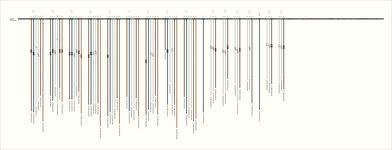| Statistics: |
Original Author: Marcia & Robert Ascher
Museum: Musee de l Homme, Paris, France
Museum Number: 64.19.1.6
Provenance: Unknown
Region: Unknown
|
# of Cords: 74 (74p)
# of Unique Cord Colors: 6
Benford Match: 0.4957
# Ascher Sums (pps, ips, cps, sps,...): 0 (0, 0, 0, 0,...)
Similar Khipu: Previous (UR1057) Next (AS074)>
|
|
| Notes: |
Ascher Databook Notes:
- AS074-AS080 are associated. See AS074 for discussion.
- By spacing, there are 15 groups and 2 single pendants (PSS and P68). The single pendants are viewed as markers since there are larger spaces between adjacent groups where they occur, and because both of them are blank. Hence, by markers and number of pendants per group, the khipu is separated into 3 parts. The first part is 9 groups of 6 pendants each; the second is 4 groups of 3 pendants each; and the last part is 2 groups of 3 pendants each.
- All groups in Part I have the same color pattern: BS, PB, W, W, MB, AB. The groups in Parts II and III have the same color pattern as each other. Their pattern is a subset of the pattern of Part I: W, W, MB.
- The pattern of values on the pendants in Parts II and III are similar:
Thus:
|

